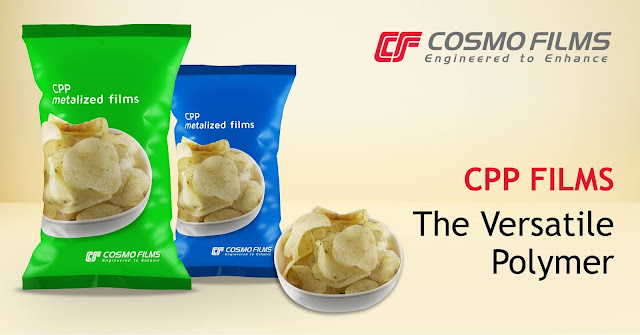Cast Polypropylene Films or CPP films have earned the reputation of
being “versatile films” in the industry, and for good reason. CPP
films score high on quality and performance, look aesthetically
great, and are an ideal choice for flexible packaging, which is why
these films are favoured in both traditional flexible packaging and
non-packing applications. In this blog, we will take a closer look at
what really makes CPP films special.
CPP films are made from polypropylene. Polypropylene is popular as a
packaging material because it has low density and weight, is very
versatile and cost-effective, and most importantly, is sustainable.
Let’s look at some of the major benefits of CPP:
Excellent Resistance To Tear
– CPP films are very robust. Hence they have a high resistance to
any kind of puncture and/or tear.
High Seal Strength and Hot
Tack Strength - Both these values
are exceptionally high making CPP films very robust and durable.
Multi-Material Structures - All
the component properties of multi-material structures come together
to optimize the performance, functionality, and total costs.
Offers Good Moisture Barrier
- To extend the shelf life of the product, it is crucial that the
film successfully protects the product from humidity, temperature and gases. CPP films provide a good moisture barrier and preserve product quality.
High Transparency - CPP films are completely transparent and attractive. Not only do they lend to the aesthetics of the product packaging, but also make it possible to see the product inside.
Good Optical Property - Great optical properties determine the shelf appeal of the product and CPP
films with its versatility ensures that the look and feel of the product are not compromised.
Excellent Machinability - These films are easy
to process and also offer great printability.
CPP films come in various varieties, but the general CPP and metalized CPP film are the most popular ones. General CPP films find widespread usage in the fields of food, agriculture and architecture because of its transparency and sealing properties. In fact, the wrappers you see for confectionery and bakery products, or even fresh food are CPP films. From food packaging to lamination and stationary, there is hardly a place where CPP films are not used. CPP films are used in the health care and pharmaceutical industries as well because these films provide a great barrier against contamination.
It is evident that CPP films dominate the Indian market. There are a couple of challenges posed by low-cost material but the advantages of CPP films supersede all of them.
Mr Pankaj Poddar, CEO Cosmo Films says, “We see more and more CPP being used globally as well as in India as a choice material for packaging applications in food and agriculture owing to its high transparency vis-a-vis polyethene and excellent sealing performance. Cosmo Films, with years of experience in the polypropylene space, has worked hard to come up with an extensive range of CPP films that it offers today both from functionality as well as mono-materialization standpoint.”






